
Engineering Procurement Construction Industry manages Projects, Delivery and Execution. It also helps to manage BOQ estimation, customer contract, quotation, project planning, tracking and sub-contracting

EPC Project Management - Context
The EPC contractor would be responsible for carrying out all the activities from the initial design, production, processing and completion of the project. Once the project is completed, it would be handed over to the end user. The end user or owner would take the project only when it is completed. EPC project management hence would be considered as the entire process which is dealt by the EPC contractor. Engineering the contract, would consider all the requirements of the contract. This would include the time taken to consider the form of contract, materials required, individuals responsible for carrying out the activities. Procurement would include the purview of securing all the capital goods and raw materials required for carrying out the project. Under procurement, the contracts which are entered into for securing raw materials would also be carried out. Construction would include the implementation phase of the entire project. Here the main criteria would be the resources utilised in carrying out the construction. Apart from this, the time aspect would be the main criterion for this. Hence EPC project management would be the entire process of managing the project from the inception phase to the completion phase. It is crucial to secure proper EPC project management consulting services in order to finalise a project.
Benefits of EPC Project Management
- Ease of Burden and Management: The company can have fewer burdens as the work would be completed under the purview by the same company or individual. This company is known as an EPC contractor.
- Professional Services Automation(PSA): EPC project management is usually conducted by professional companies and individuals.These projects can be completed within a stipulated time frame.
- All Services under one Company: All the services related to engineering, procurement and construction are carried out by one company. Hence the individual giving the contract would not have the burden to assign the procurement and construction aspect of the project to another company. All the services would be carried out by one company.
EPC Project Management - Benefits
Scope of works under this carried out by EPC contractor or company.
- EPC Project Management Company.
- Concept Development.
- Carry out Feasibility Studies.
- Front End Engineering Design Analysis and development.This would be one of the main steps of carrying out the EPC contract. The design and resources utilised in this step would be carried out. Process flow diagrams and other particulars would also be discussed under this step. FEED analysis is a resourceful tool which is utilised in project budgeting. Such tools are useful in budgeting analysis.
- EPC Implementation.
- EPC Commissioning.
- Quality Standards.
Peacksoft EPC workflow.
Project & Tender
In Peacksoft EPC, managing projects and tenders involves several key components to ensure transparency and efficiency throughout the lifecycle of industrial projects. Here’s an overview of the process:
1. Project Management:
a. Definition: Each project is defined with a clear beginning and end, focusing on delivering a unique product, service, or result.
b. Scope and Objectives: Projects have specific goals, deliverables, and timelines, enabling teams to stay aligned and on track.
2. Tender Management:
a. Formal Offers: Tenders are competitive bids submitted in response to a Request for Proposal (RFP) or Invitation to Tender (ITT).
b. Bid Submission: The system allows for the submission and management of tenders, ensuring all necessary documentation is in place for review and evaluation.
3. Tender Work Order:
a. Final Project Details: This document outlines the agreed-upon project values, terms, and conditions between the contractor and client.
b. Mutual Understanding: It ensures both parties have a clear understanding of the expectations, deliverables, and timelines.
4. Tender Site Survey:
a. Pre-Quotation Assessment: Conducting a site survey allows for accurate measurements and assessments before submitting quotations and project estimates.
b. Data Collection: Information gathered during the survey helps in creating detailed and competitive bids.
5. Transparency and Efficiency:
a. Bid Management: Peacksoft EPC facilitates complete transparency throughout the tendering process, from submission to bid evaluation and final project execution.
b. Tracking and Reporting: Users can track the status of tenders and projects, ensuring accountability and streamlined communication among stakeholders.
6. Project Execution:
a. Implementation: Once a tender is accepted, the project moves into execution, where teams follow through on the defined objectives and deliverables.
b. Performance Monitoring: Continuous monitoring and reporting ensure that projects stay within scope, on time, and on budget.
By integrating these elements, Peacksoft EPC provides a comprehensive solution for managing industrial projects, fostering collaboration, and enhancing decision-making through real-time insights.
Read more on EPC Workflow
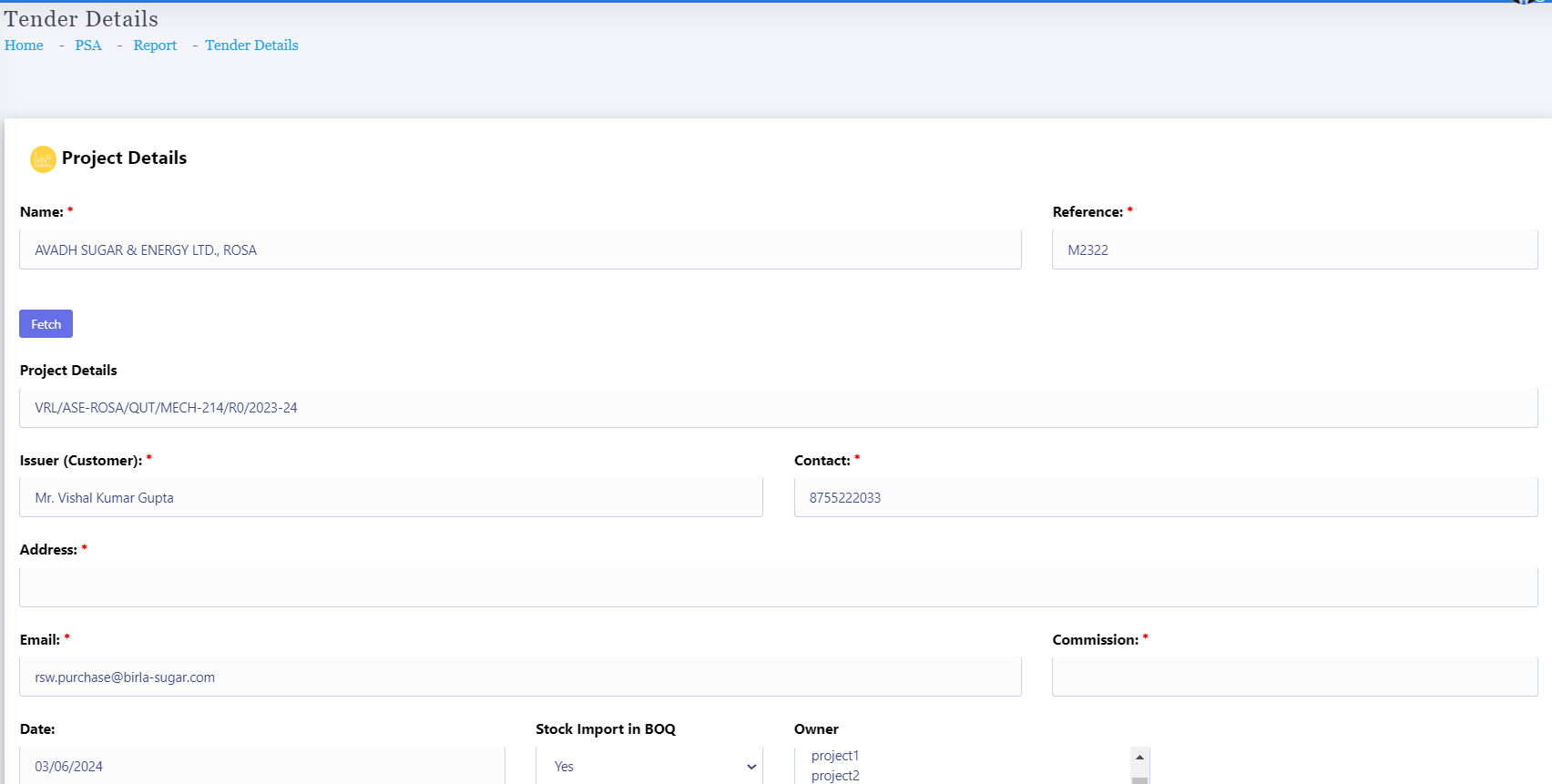
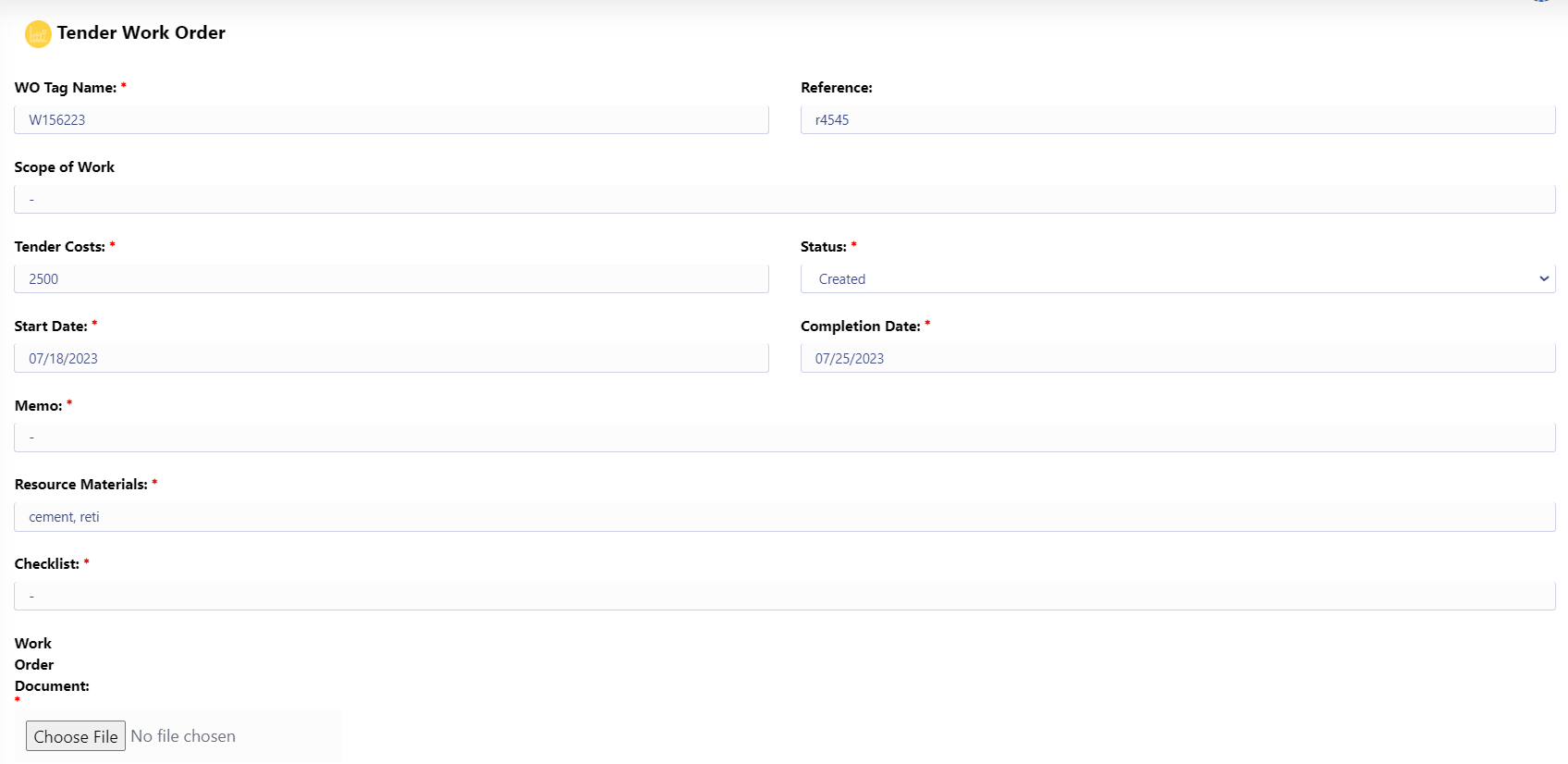

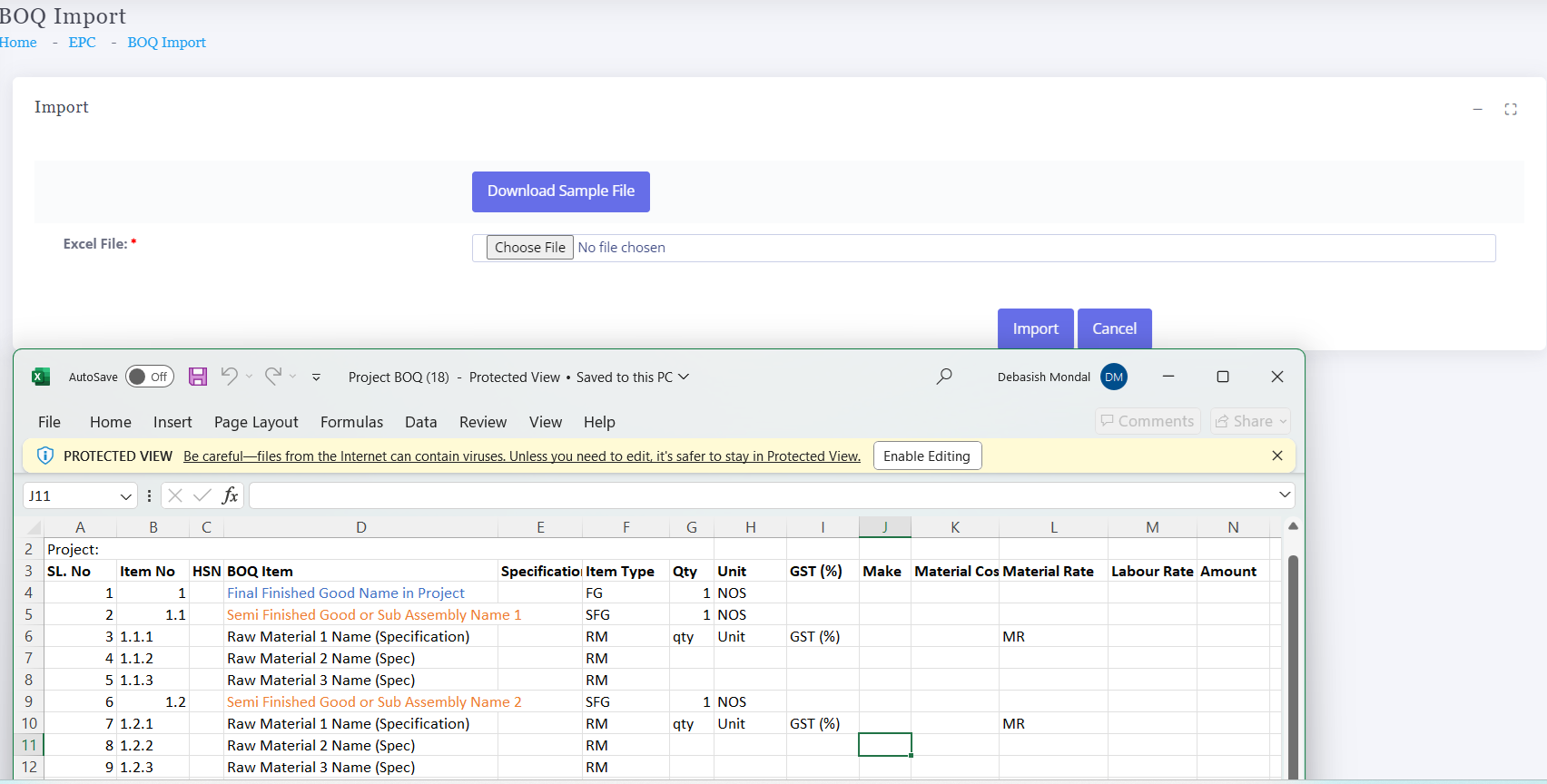
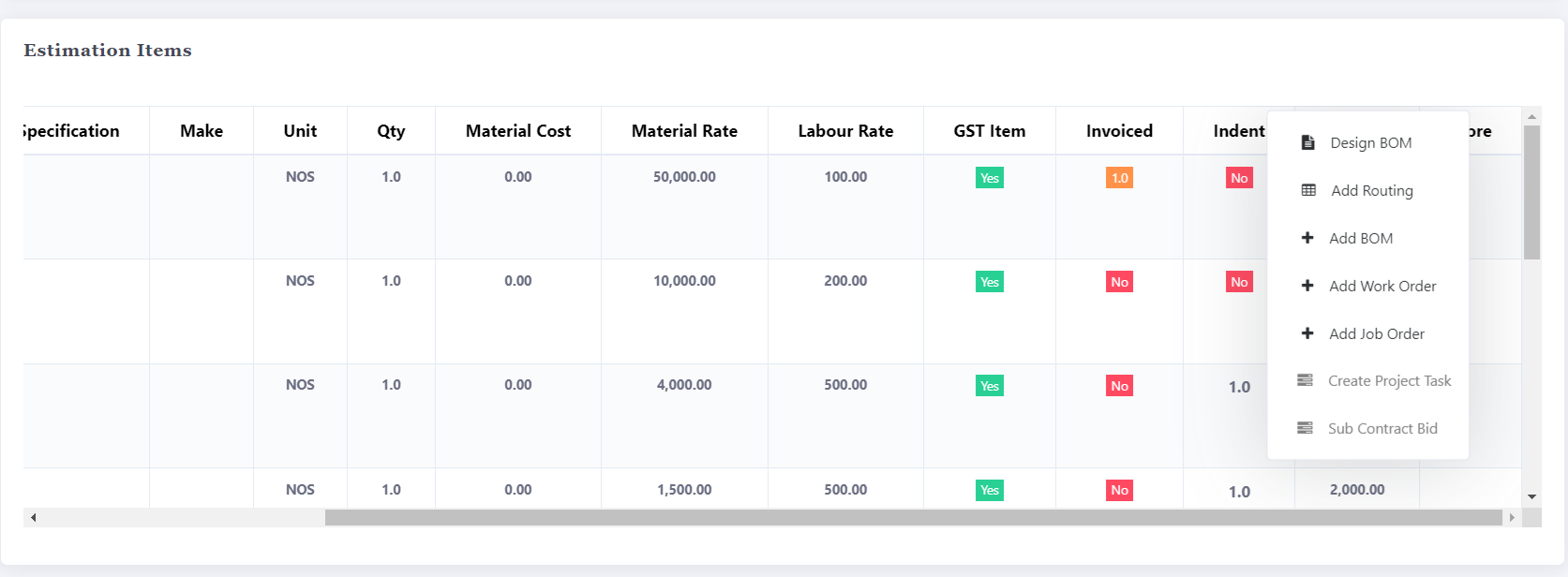
BOQ Estimation
Here's a concise overview of the Bill of Quantities (BOQ) process and its integration within Peacksoft ERP:
Bill of Quantities (BOQ) Overview:
a. Definition: A comprehensive list detailing all materials, labor, and services needed to complete a construction project.
b. Purpose: BOQ estimation helps contractors provide a detailed project cost breakdown, while owners and project managers use it for budgeting and planning.
BOQ Estimation Process:
a. Analysis: Review drawings and specifications to identify necessary materials, labor, and services.
b. Quantity Determination: Calculate the quantities required for each item listed in the BOQ.
c. Cost Calculation: Determine the cost for each item based on material rates and labor costs.
Integration with Peacksoft ERP:
a. Import Functionality: BOQ items with quantities, material rates, costs, and other details can be imported from an Excel template, ensuring comprehensive data entry.
b. Profitability Analysis: Post-import, the ERP generates profitability analysis reports to evaluate project viability.
Project Management Features:
a. Procurement Management: Users can manage procurement for project items, including issuing materials and coordinating in-house production with associated BOM and raw materials.
b. Milestone Mapping: BOQ items can be directly linked to specific project deliverables or milestones, enhancing tracking and accountability.
Subcontractor Management:
a. Bidding Process: Items requiring external manufacturing can be put out for subcontractor bids, facilitating a transparent selection process.
b. RFQ Processing: The system supports sending Requests for Quotation (RFQs) and awarding work orders to the most suitable bidders.
c. Invoice Management: Subcontractor invoices can be linked to their respective work orders, streamlining payment and documentation processes.
Benefits:
a. Efficiency: Automating the BOQ estimation and procurement processes reduces manual effort and minimizes errors.
b. Transparency: Clear documentation and tracking enhance collaboration among all project stakeholders.
c. Cost Control: Detailed analysis and reporting capabilities assist in managing project costs effectively.
This comprehensive approach to BOQ management in Peacksoft ERP ensures that construction projects are planned, executed, and monitored with precision, ultimately leading to better outcomes and enhanced project success.
Project Contract
A Project Contract within Peacksoft ERP outlines the mutual agreement between the parties involved, detailing the specific terms, conditions, and obligations related to a project. Here's a breakdown of how it functions:
Project Contract Overview:
Definition: A formal Memorandum of Understanding (MOU) that defines the responsibilities, terms, and conditions agreed upon by both parties.
Purpose: Ensures clear communication on project expectations, regulations, timelines, and payment structures to avoid misunderstandings during project execution.
Key Components:
Terms and Conditions: Comprehensive listing of all the regulations, guidelines, and obligations that both parties must adhere to throughout the project lifecycle.
Payment Schedules: Detailed breakdown of when payments are due, aligned with project milestones, deliverables, or specific stages of completion.
a. Payment can be tied to percentage completion, specific dates, or upon successful delivery of defined project phases.
Project Delivery: Specifications on the scope of deliverables, timelines, and any quality or performance benchmarks that must be met for payment or completion.
Additional Parameters: May include clauses on penalties, bonuses for early completion, warranties, service-level agreements (SLAs), or provisions for changes or extensions to the project.
Project Contract Features in Peacksoft ERP:
Breakdown of Payment Schedules: The system allows users to define and track multiple payment installments linked to specific project milestones or delivery criteria.
a. Payment Alerts and Reminders: Automated alerts for due payments based on the project schedule ensure timely follow-up and adherence to agreed terms.
b. Amendments and Adjustments: If there are any changes in the project scope or schedule, the contract details can be amended with appropriate documentation and mutual approval.
c. Reporting and Documentation: The system provides comprehensive reporting for each phase of the project, showing completed milestones, pending payments, and overall contract progress.
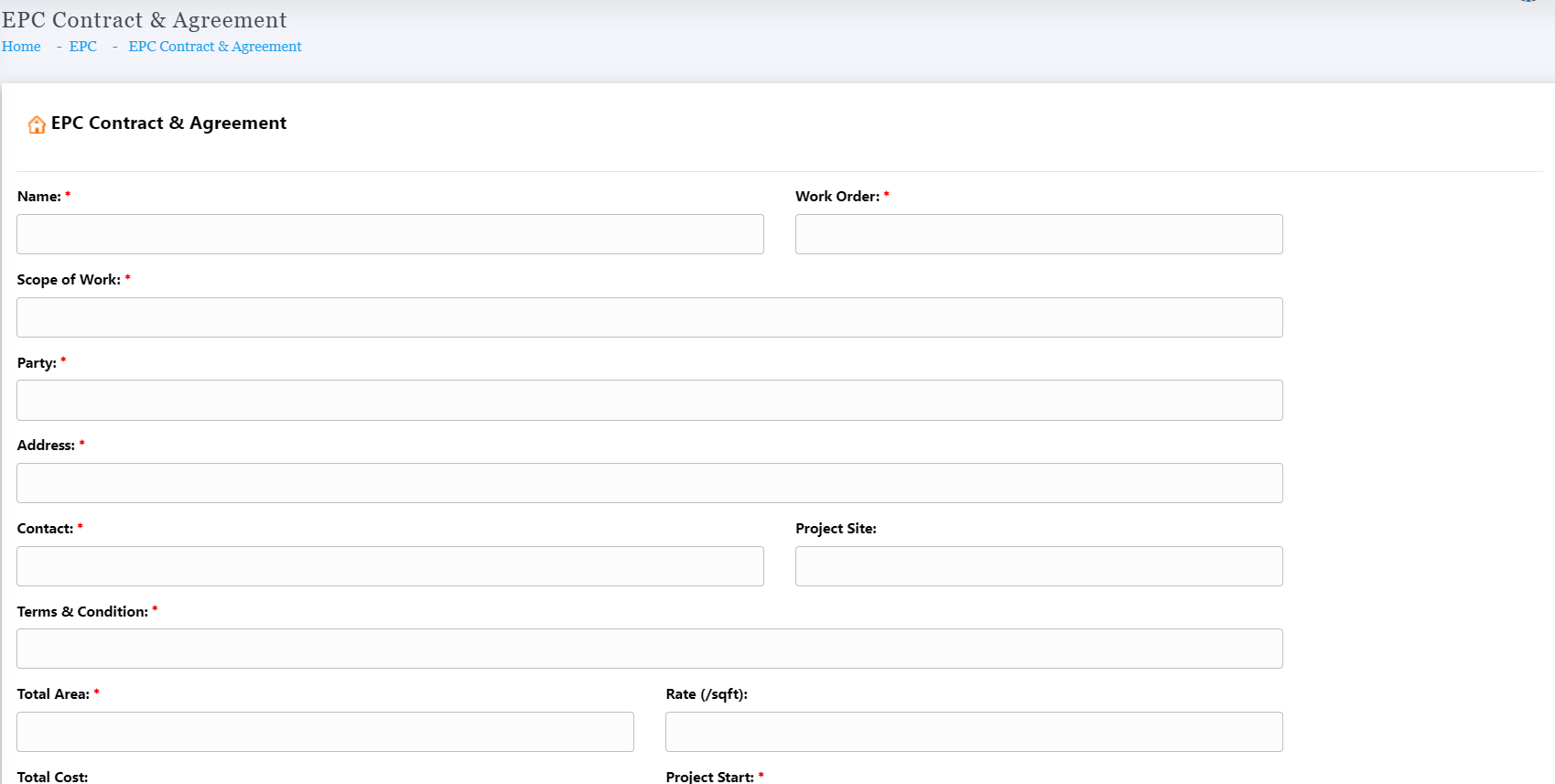
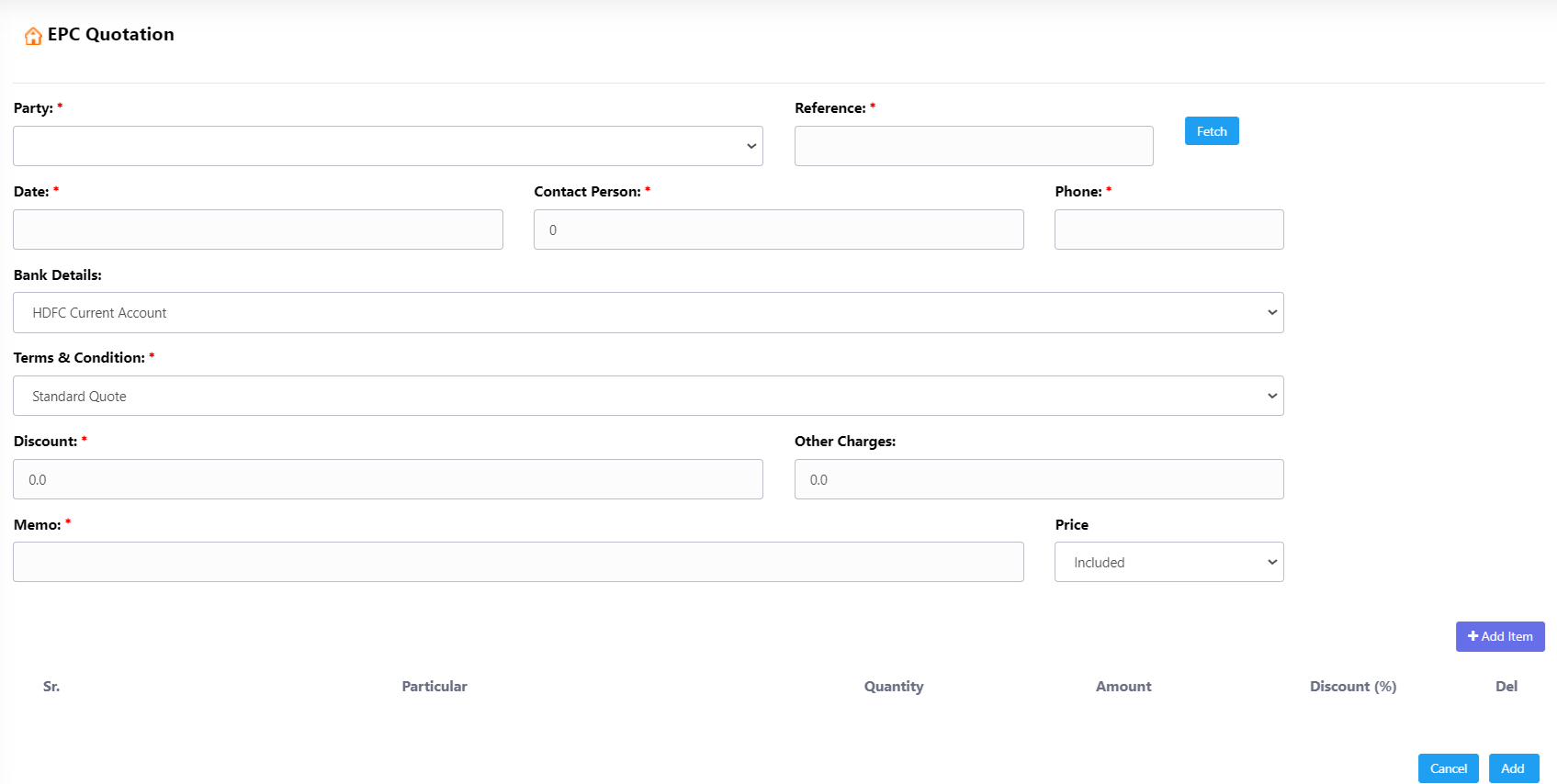
Project Quotation
A Project Quotation in Peacksoft ERP is created after the BOQ (Bill of Quantities) Estimation is completed based on the comprehensive requirements specification provided by the client. Here's how the process works:
Steps in Project Quotation Creation:
BOQ Estimation:
a. The BOQ lists all the required materials, labor, and services necessary to complete the project.
b. This estimation covers item quantities, material rates, labor costs, and other associated expenses.
c. The BOQ can be imported from a template Excel file, and it forms the foundation of the project cost.
Quotation Generation:
a. After the BOQ estimation, a Project Quotation is prepared by the party, which includes:
Item Prices: The prices for each item listed in the BOQ, including raw materials, finished goods, or semi-finished goods.
Material Costs: Detailed pricing for the raw materials needed.
Labor Charges: Costs associated with the labor required to complete the project.
The quotation is comprehensive, covering all aspects of the project based on the BOQ items.
Quotation Breakdown:
The quotation can break down each BOQ item into specific components, such as:
1. Item description
2. Unit price
3. Quantity
4. Total cost (item price × quantity)
Additional charges (such as overhead or taxes, if applicable)
Customization:
The system allows users to make adjustments to the quotation, such as adding discounts, adjusting terms, or revising any details before submitting it to the client.
The quotation can be revised multiple times and tracked in the system, ensuring transparency in communication with the client.
Approval Process:
1. Once the quotation is ready, it can be reviewed and approved internally before being sent to the client for their approval.
2. If required, the client can request revisions, and the ERP system can track these changes.
Project Estimate and Profitability Analysis:
1. Before finalizing the quotation, the profitability analysis report is generated, allowing the business to ensure that the project is financially viable.
2. This report provides insight into expected margins and costs, factoring in both material and labor charges.
Key Features:
Material and Labor Charges: Detailed cost analysis for materials and labor, ensuring that both are accurately captured in the quote.
Multi-level Breakdown: The ability to handle complex, multi-level BOQ items and associate them with different project deliverables.
Profitability Analysis: Built-in profitability assessment ensures that the project remains cost-effective.
Revisions and Approvals: Flexibility to revise quotations and track the approval process.
Project Planning
Project Planning is a critical process in project management that lays the foundation for successful project execution. It ensures that all elements of the project, such as tasks, resources, and timeframes, are thoroughly defined, coordinated, and aligned with project goals. Here's an overview of how project planning works:
Defining Goals and Objectives:
The first step is to clearly define what the project aims to achieve. This includes setting specific, measurable, achievable, relevant, and time-bound (SMART) objectives.
These goals provide direction and establish a benchmark for success.
Defining the Scope:
The project scope outlines the boundaries of the project, including deliverables, tasks, and the extent of work to be completed.
A scope statement is created to ensure that all stakeholders have a shared understanding of what the project will deliver and what will not be included.
Task Breakdown (Work Breakdown Structure):
The Work Breakdown Structure (WBS) involves breaking down the project into smaller, manageable tasks and subtasks.
Each task is associated with a specific deliverable and assigned to team members or departments responsible for its completion.
Estimating Time and Resources:
For each task, estimates are made regarding:
Time: How long it will take to complete each task.
Resources: The required human resources (skills, labor), materials, and equipment.
Resource leveling and allocation ensure the availability of the right resources at the right time, preventing delays.
Creating a Project Schedule:
A Gantt chart or timeline is developed to visually map out when tasks need to be completed.
The schedule includes task dependencies (where one task relies on the completion of another), milestones, and critical deadlines.
Scheduling tools in project management software allow real-time tracking and adjustments to keep the project on track.
Budgeting:
Budget estimates are prepared based on the resources and time required.
A comprehensive budget plan considers direct costs (labor, materials) and indirect costs (overheads, administrative expenses), as well as contingency funds for risk mitigation.
Risk Management Plan:
A risk management plan identifies potential risks that could affect the project’s success, including delays, budget overruns, or resource shortages.
Each risk is analyzed in terms of its likelihood and impact, and mitigation strategies are developed to handle these risks.
Defining Roles and Responsibilities:
The project team’s roles and responsibilities are clearly outlined in a responsibility matrix (such as RACI – Responsible, Accountable, Consulted, Informed).
This ensures that everyone knows their tasks, how they fit into the bigger picture, and whom they report to.
Communication Plan:
A communication strategy is defined to ensure regular updates, feedback, and alignment between stakeholders.
Communication tools and reporting formats are set, including meetings, progress reports, and updates.
Quality Management:
Standards for quality and performance metrics are established, ensuring that the deliverables meet the required specifications.
A quality control plan details how the project’s progress will be measured and evaluated against these standards.
Steps in Project Planning:
1. Initiation: Understand project requirements, conduct feasibility studies, and gather initial information to form the basis of the project.
2. Task Breakdown and Scheduling: Break the project into smaller components and schedule tasks, ensuring logical sequence and effective use of resources.
3. Risk Assessment: Identify potential risks early on and develop contingency plans to address them, should they occur.
4. Resource Allocation: Assign team members and other resources to specific tasks and ensure availability during the required project phases.
5. Execution Roadmap: Create the detailed timeline, mapping tasks, deadlines, and milestones, ensuring proper sequencing and stakeholder awareness.
Why Project Planning is Essential:
Clarity and Direction: A well-planned project provides all team members and stakeholders with a clear understanding of the goals, timelines, and expectations.
Resource Efficiency: It ensures the right resources are available when needed, avoiding bottlenecks or delays.
Risk Mitigation: Identifies potential risks early and prepares mitigation strategies, helping avoid or minimize disruptions.
Cost Control: With accurate budgeting and resource management, the project is less likely to go over budget.
Stakeholder Alignment: A well-communicated project plan keeps all stakeholders on the same page, reducing misunderstandings and misalignments.
Effective project planning serves as the foundation for a successful project by ensuring that all tasks are clearly defined, scheduled, and resourced while identifying potential risks and developing strategies to mitigate them. It provides the roadmap that helps the project stay on track, on budget, and within the desired quality parameters.
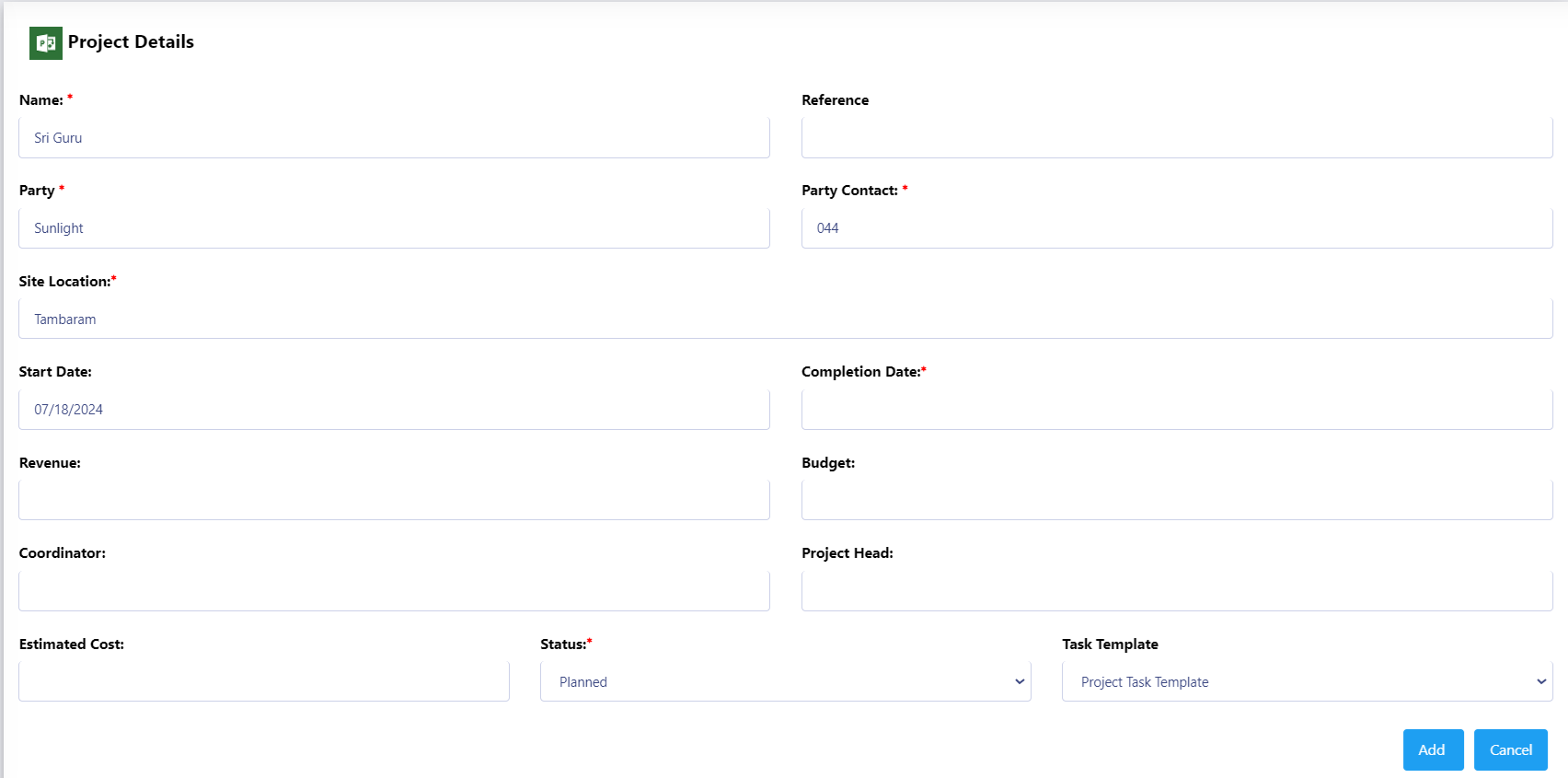
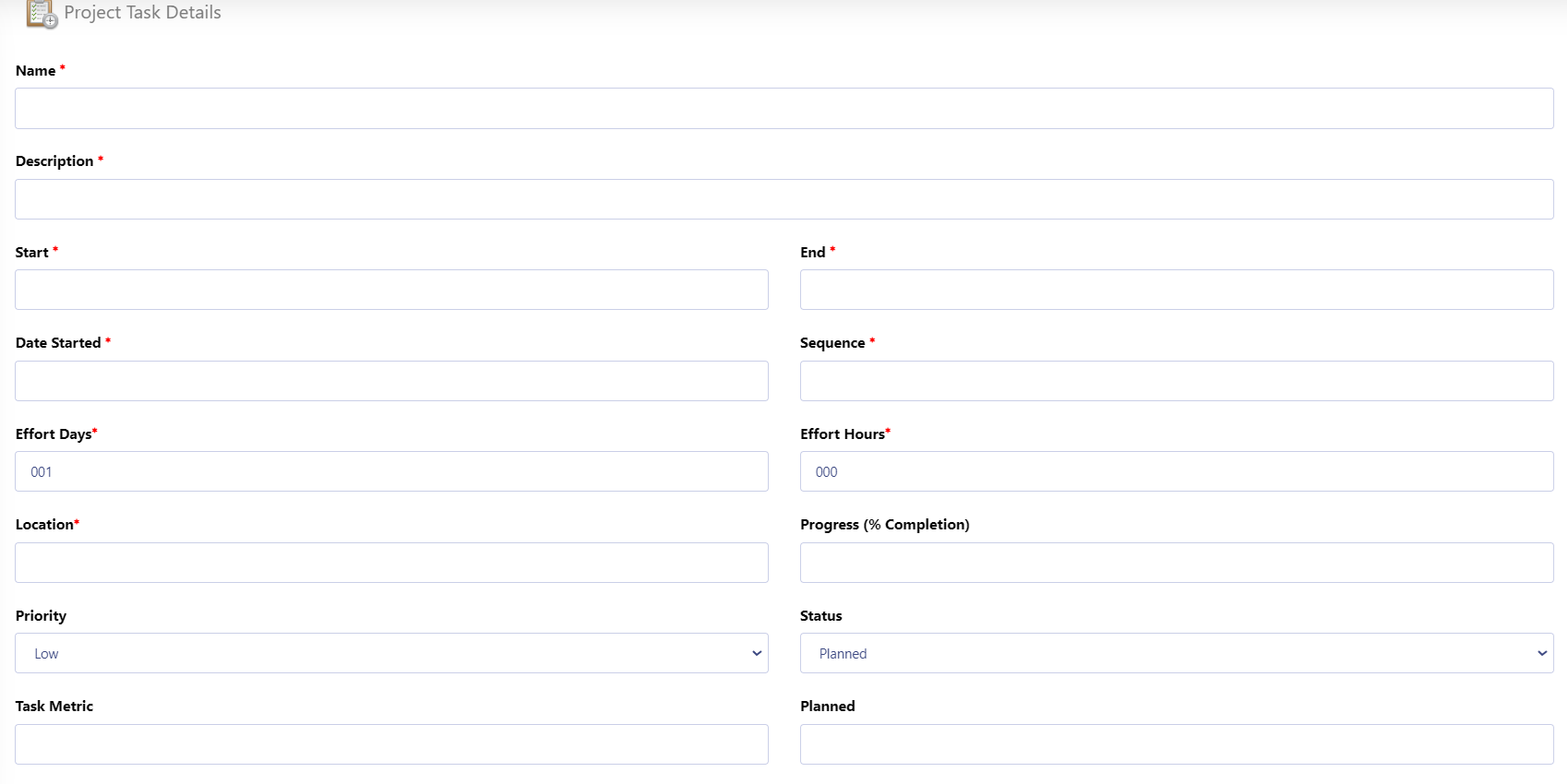

Project Management
Project management is the disciplined approach to guiding a project from start to finish, involving a series of structured processes, tools, and techniques to ensure successful completion. It integrates planning, resource management, monitoring, and control to meet project objectives within scope, time, and budget constraints. Here's a breakdown of the key components of project management:
Key Components of Project Management:
Project Initiation:
1. Define the project at a high level, identifying its purpose, objectives, and scope.
2. Conduct a feasibility study and stakeholder analysis.
3. Develop a project charter that outlines key deliverables, stakeholders, and the approval process.
Defining Project Scope:
1. Clarify what is and isn’t included in the project, establishing clear boundaries to avoid scope creep.
2. Define deliverables, objectives, constraints, and assumptions.
Setting Goals and Objectives:
1. Use SMART (Specific, Measurable, Achievable, Relevant, Time-bound) goals to ensure clarity and achievability.
2. Align project goals with organizational objectives.
Creating a Project Plan:
1. Develop a Work Breakdown Structure (WBS) to divide the project into manageable tasks.
2. Set a schedule using Gantt charts or other tools, defining task dependencies and milestones.
3. Establish a project timeline, budget, resource allocation, and risk management plan.
Allocating Resources:
1. Assign the necessary resources, such as personnel, equipment, and materials.
2. Ensure that team members’ roles and responsibilities are clearly defined.
Managing and Monitoring Progress:
1. Track project progress against the schedule.
2. Monitor KPIs such as budget, time, quality, and scope adherence.
3. Use tools like earned value management (EVM) to measure project performance.
Controlling Changes:
1. Establish a change management process to control any adjustments to scope, cost, or schedule.
2. Ensure that all changes are documented, evaluated for impact, and approved through formal processes.
Closing the Project:
1. Confirm that all project deliverables meet the required standards and are handed over.
2. Perform a project review to assess performance, lessons learned, and successes.
3. Close contracts and ensure that all documentation is archived for future reference.
Project Management Techniques:
Agile:
1. Agile focuses on iterative development, emphasizing flexibility and customer feedback throughout the process.
2. Suitable for software development and industries requiring quick adaptation to changes.
Scrum:
1. A subset of Agile, Scrum uses short cycles called sprints to complete project segments.
2. Involves daily stand-up meetings and a Scrum master to guide the team.
3. Prominent in software development and projects requiring iterative feedback.
Waterfall:
1. A traditional, linear approach where each phase of the project must be completed before moving to the next.
2. Works well for projects with clear, stable requirements, such as construction.
Lean:
1. Focuses on minimizing waste and maximizing efficiency in project processes.
2. Useful in manufacturing and product development, with an emphasis on continuous improvement.
Leadership and Collaboration:
Communication: Clear communication channels ensure that stakeholders, team members, and sponsors are always aligned.
Collaboration: Fostering teamwork across departments is key to managing conflicts and ensuring cohesive project delivery.
Leadership: Strong leadership skills are necessary to motivate teams, resolve conflicts, and steer the project toward its goals.
Project management provides the framework for delivering successful projects, balancing the project triangle of scope, time, and cost. By applying structured methods like Agile, Scrum, Waterfall, or Lean, project managers can adapt to the specific needs of various industries, ensuring projects are delivered on time, within budget, and to the desired quality standards. The role demands effective communication, leadership, and problem-solving to meet the evolving needs of stakeholders and drive the project to successful completion.
Read more on Project Planning & Execution
Sub-Contracting
Subcontracting is a common practice in industries such as construction, manufacturing, and large-scale services, where specialized skills or additional resources are required to complete specific portions of a project. In this arrangement, the main contractor, who has the overall responsibility for delivering the project, hires subcontractors to execute certain tasks or provide specialized services. Here are some key points related to subcontracting:
Key Elements of Subcontracting:
Specialization:
1. Subcontracting allows the main contractor to bring in experts or companies with specialized skills or expertise that the primary team may lack.
2. Subcontractors are often highly specialized in a specific area, such as electrical work in construction or software integration in IT projects.
Risk Management:
1. By subcontracting certain parts of the project, the main contractor can transfer risks associated with specific tasks to the subcontractor.
2. The subcontractor assumes responsibility for their portion of the work, including timelines, costs, and quality control.
Resource Optimization:
1. Subcontracting enables the main contractor to take on larger or more complex projects without needing to permanently hire additional staff or invest in new resources.
2. It provides flexibility to scale up or down as project needs change.
Accountability:
1. Subcontractors are accountable to the main contractor or another subcontractor in the project hierarchy.
2. They are bound by the terms of their contract to meet specific deliverables, deadlines, and quality standards.
Cost Control:
1. Subcontracting can help control project costs, as subcontractors often provide competitive bids to win portions of the project.
2. It allows for more predictable budgeting by isolating certain tasks and their associated costs.
Contractual Relationships:
1. A subcontract is a formal agreement that defines the scope of work, timelines, payment terms, and responsibilities of both the subcontractor and the contractor.
2. The main contractor remains liable to the client for the successful completion of the overall project, even though parts of the work are subcontracted.
Subcontractor Management:
1. Managing subcontractors involves coordinating schedules, ensuring alignment with the project's goals, and monitoring the quality of their work.
2. Effective communication between the main contractor and subcontractors is essential to maintain project progress and handle any issues that arise.
Benefits of Subcontracting:
1. Access to Expertise: Subcontractors bring specialized knowledge that may be outside the main contractor’s expertise.
2. Scalability: Subcontracting enables organizations to scale their operations based on project demands without needing permanent hires.
3. Flexibility: The ability to subcontract allows contractors to be more adaptable to varying project requirements.
4. Risk Reduction: By delegating specific portions of the project, the main contractor can focus on core responsibilities, reducing overall project risk.
Challenges of Subcontracting:
Coordination Issues: Managing multiple subcontractors requires careful coordination to avoid delays or conflicts in scheduling.
Quality Control: Ensuring that subcontractors meet quality standards is a critical challenge.
Dependency: The main contractor’s success depends on the subcontractors' performance, so poor subcontractor management can result in project delays or failure.
Subcontracting in ERP Systems:
Many ERP systems, like Peacksoft ERP, allow users to track and manage subcontracting processes. This includes:
1. Creating subcontracting work orders.
2. Managing subcontractor bids and selecting the most competitive option.
3. Tracking subcontractor invoices and payments based on work completed.
4. Monitoring progress and quality through integrated project management features.
Subcontracting is a strategic tool that allows businesses to tap into specialized expertise, manage resources more effectively, and mitigate risks. By distributing work across multiple entities, the main contractor can focus on high-level project management, ensuring that the project is delivered on time and within budget. However, it requires careful coordination, communication, and management to ensure all parties work in harmony toward the project's successful completion.
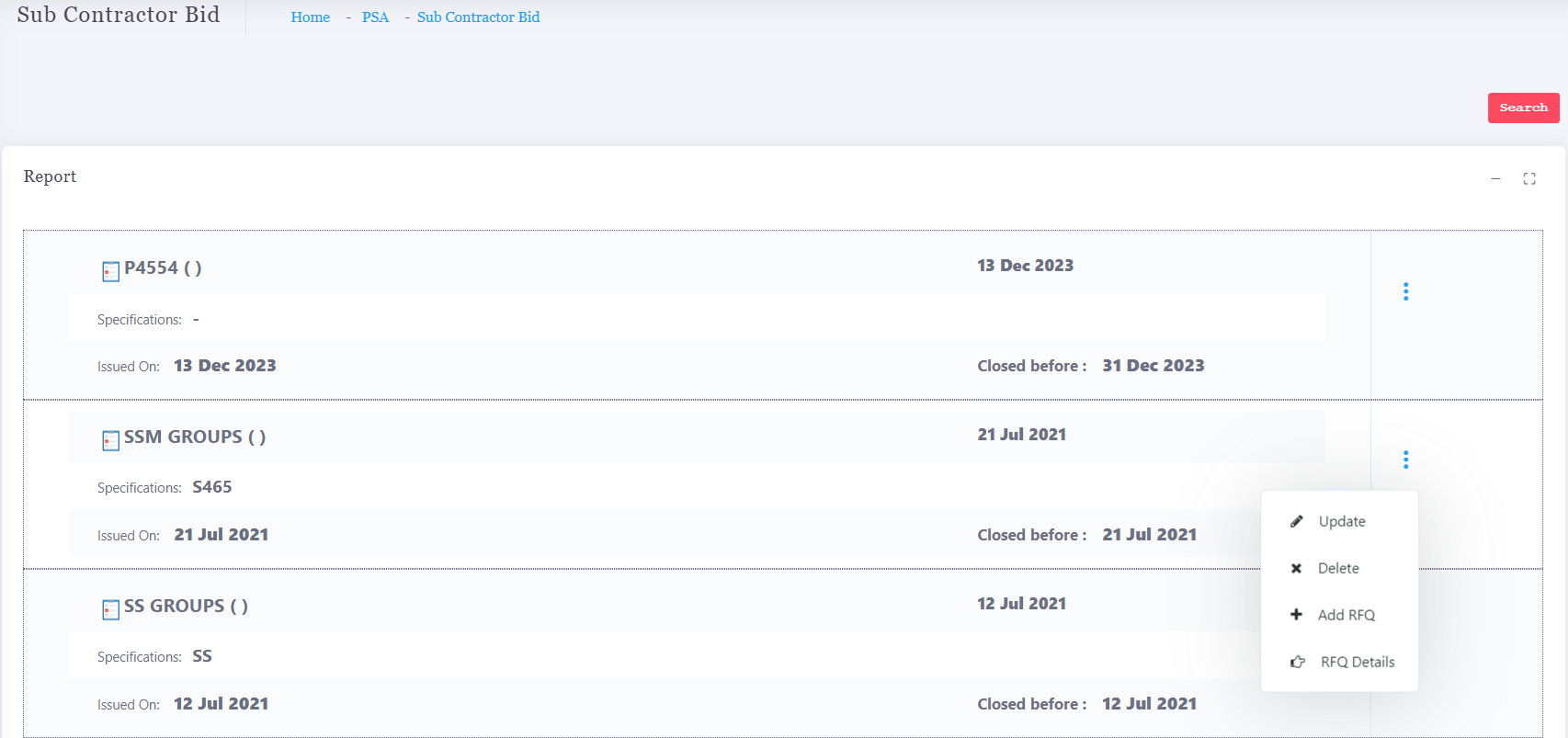
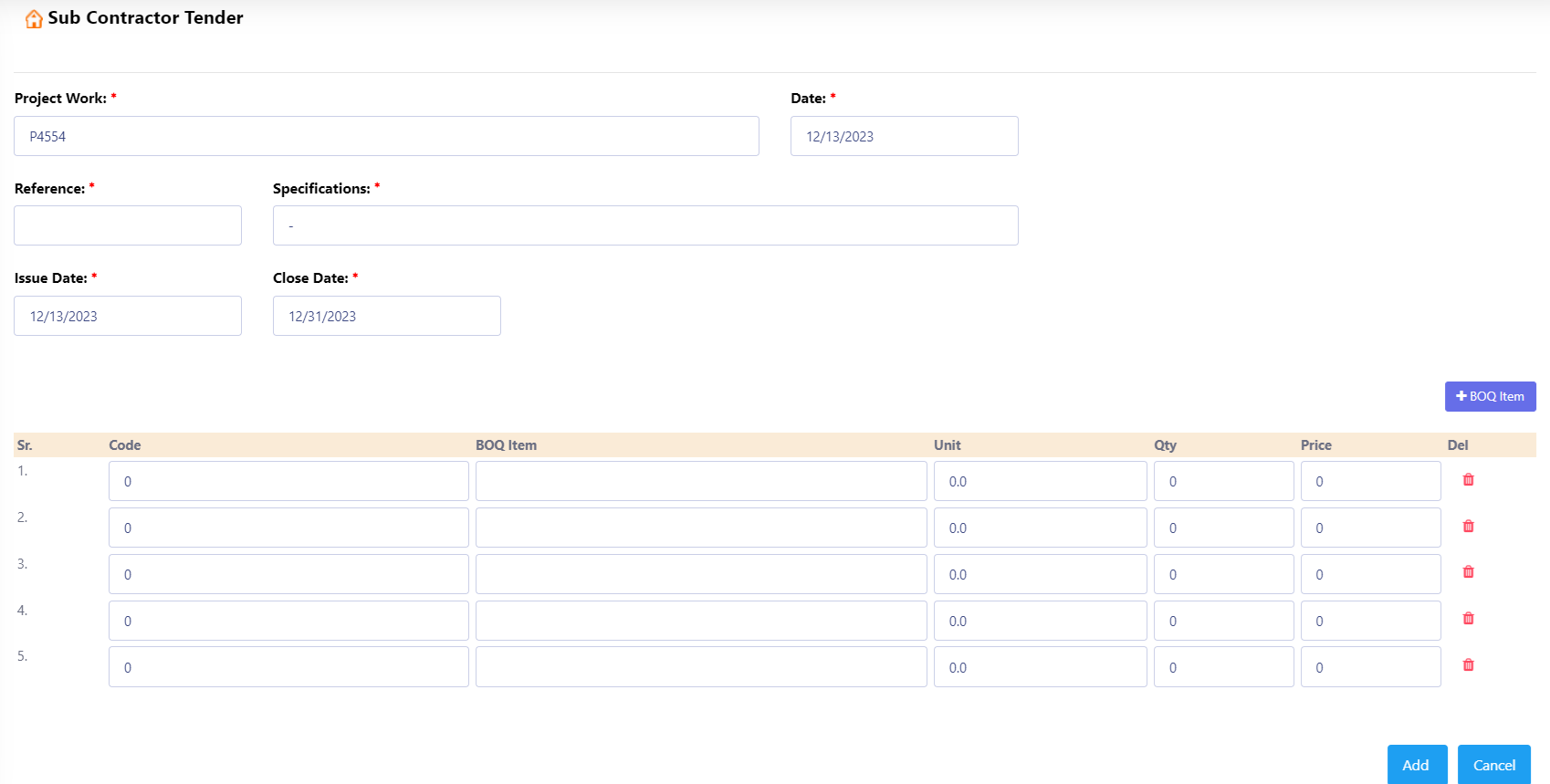
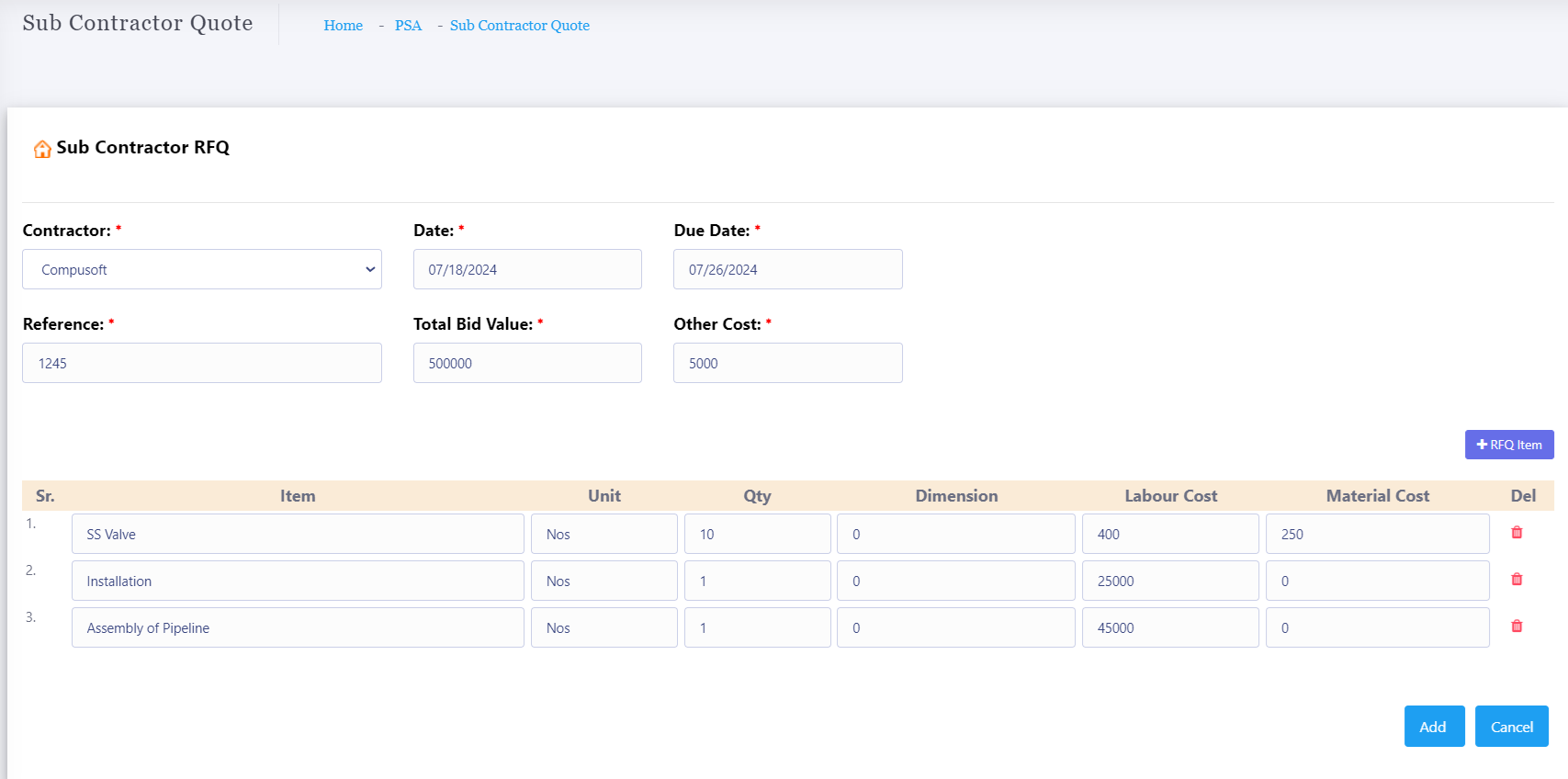
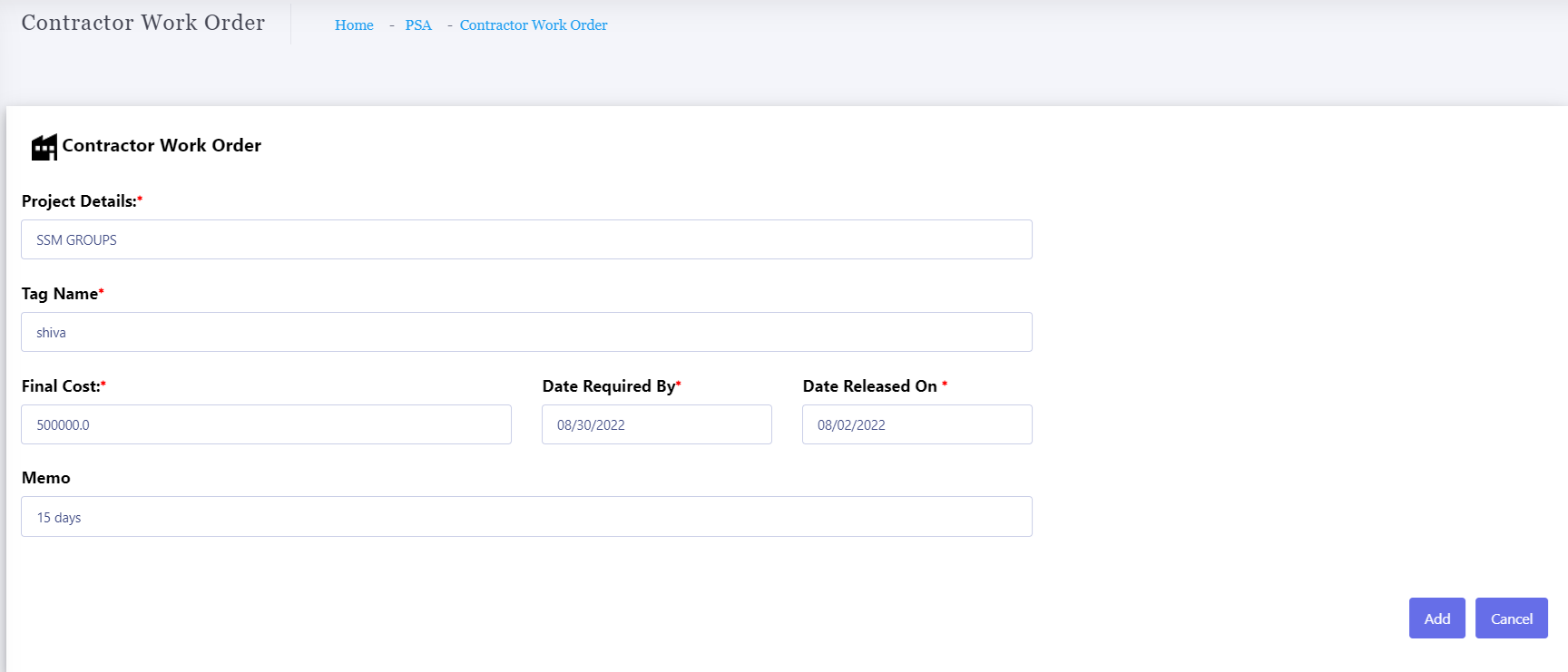
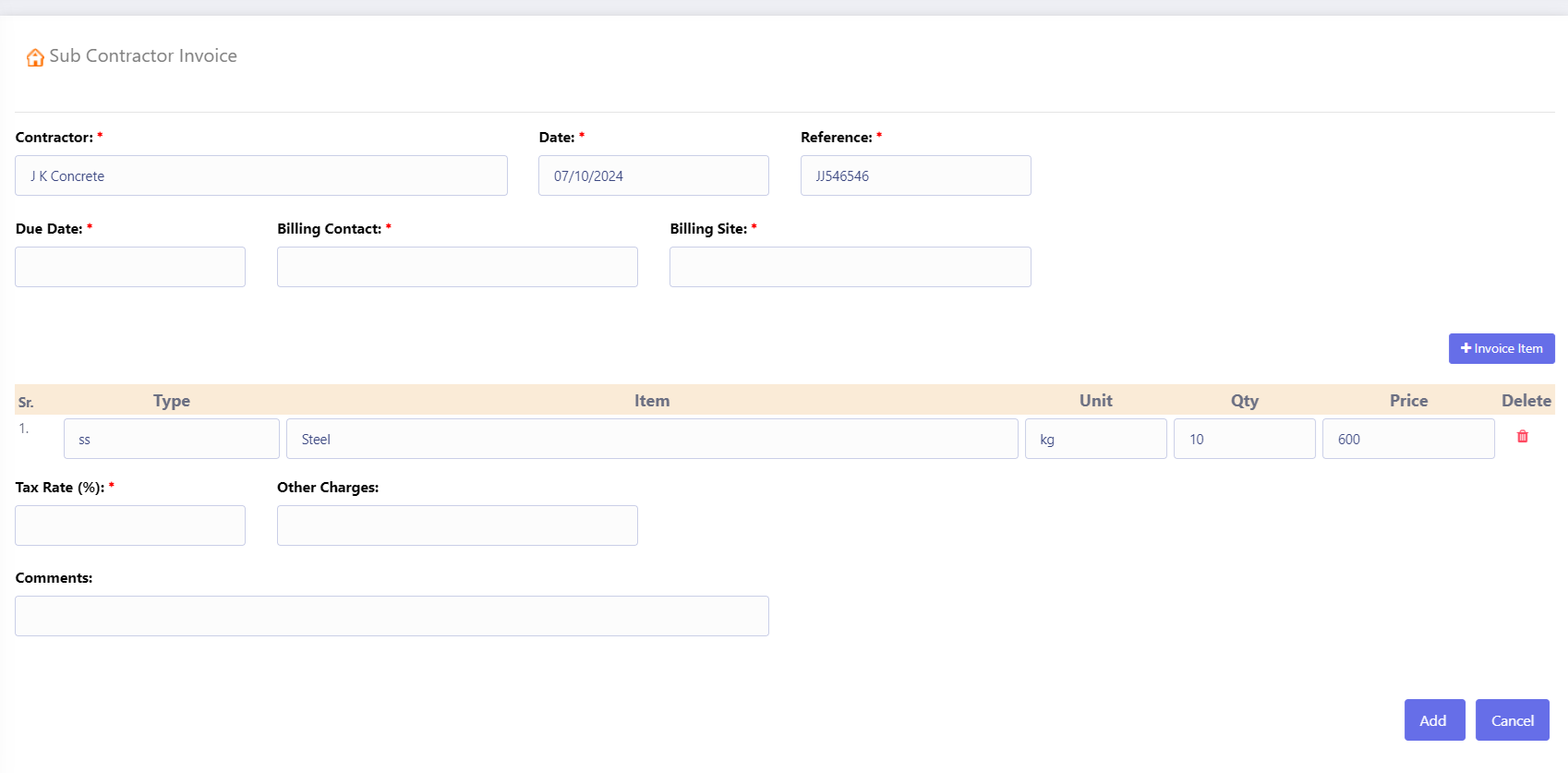

Professional Service Automation (PSA)
Professional Services Automation (PSA) software is a comprehensive tool designed specifically for organizations that provide client services, helping them streamline their operations and manage the full project lifecycle efficiently. It integrates various functions like project management, resource allocation, time tracking, invoicing, and collaboration into a single platform, allowing businesses to deliver projects more predictably and optimize their use of resources.
Here’s how PSA software works and its key benefits:
Key Features of PSA Software:
Project Management:
PSA tools help teams plan, execute, and monitor projects from start to finish. Users can define project goals, assign tasks, set milestones, track progress, and adjust timelines in real-time. This reduces the risk of project delays and enhances visibility into project status.
Resource Allocation and Planning:
Resource management is a key part of PSA, allowing organizations to efficiently assign the right resources (people, equipment, etc.) to tasks based on availability and skills. This ensures optimal utilization of resources and prevents overallocation or underutilization.
Time and Expense Tracking:
PSA software integrates time tracking, enabling professionals to log the hours worked on various projects. This is crucial for billing, performance evaluation, and tracking project profitability. Expenses related to projects can also be tracked and linked directly to the corresponding client engagement.
Invoicing and Billing:
PSA software automates invoicing processes by integrating tracked time, expenses, and project milestones. It ensures that all billable activities are accounted for, enabling accurate and timely invoicing. This reduces the time spent on manual invoicing and minimizes errors.
Collaboration Tools:
Many PSA systems include built-in collaboration features, such as communication tools, shared task lists, and document management. These features allow project teams to work together more effectively, whether they are in the same office or distributed globally.
Client Relationship Management (CRM):
PSA systems often integrate with CRM tools or have built-in CRM functionality to manage client interactions, proposals, and service requests. This helps ensure that client data, contracts, and communications are easily accessible, improving service delivery.
Reporting and Analytics:
PSA software provides detailed reporting and analytics on project performance, resource utilization, profitability, and more. These insights help managers make data-driven decisions, such as identifying resource bottlenecks, optimizing future projects, or adjusting pricing strategies.
Benefits of PSA Software:
Improved Project Delivery:
PSA software standardizes project delivery processes, ensuring that projects are delivered on time and within budget. This predictability helps improve client satisfaction and retention.
Centralized Data and Processes:
By consolidating project data, resources, and financials into a single system, PSA eliminates data silos and makes it easier for stakeholders to access accurate and up-to-date information, improving decision-making and project oversight.
Automation of Repetitive Tasks:
PSA tools automate time-consuming manual tasks such as invoicing, scheduling, and reporting. This not only saves time but also reduces the risk of errors and improves operational efficiency.
Enhanced Resource Utilization:
PSA helps organizations maximize their resource usage by providing insights into which team members are under or over-allocated. This allows businesses to balance workloads more effectively and optimize resource planning for future projects.
Increased Visibility into Profitability:
With real-time data on project costs, time spent, and revenue generated, PSA tools give businesses insight into which projects or clients are most profitable. This enables better financial management and forecasting.
Better Client Engagement:
By integrating project management with CRM functions, PSA tools ensure that client needs are tracked and managed throughout the project lifecycle. This leads to improved communication and client satisfaction.
Scalability for Growing Businesses:
PSA systems can grow with an organization, supporting increasing project complexity, larger teams, and more sophisticated reporting needs. It can easily scale to meet the demands of larger clients or more intricate service offerings.
Industries Using PSA:
1. Consulting Firms: To manage multiple client engagements, track time spent on consulting projects, and ensure accurate billing.
2. IT and Software Services: To allocate developers, manage development milestones, and track billable hours for software implementation projects.
3. Marketing and Creative Agencies: To handle client campaigns, manage creative resources, and ensure projects are delivered on time.
4. Architecture and Engineering Firms: For managing complex, multi-phase projects, tracking resource costs, and ensuring adherence to project deadlines.
PSA software is an essential tool for service-based organizations looking to streamline their operations and deliver projects more predictably. By combining project management, resource planning, time tracking, and invoicing into a single platform, PSA helps companies improve their service delivery, reduce operational inefficiencies, and gain better visibility into project performance and profitability. This makes PSA a powerful solution for professional services organizations aiming to grow and scale their operations efficiently.
Read more on Professional Services Automation
Get Started with Peacksoft ERP Today
Intuitive solutions on cloud with integrated features like Accounting, Purchase, Sales, Production, CRM, Payroll, Inventory & Filing of all compliances. . Call us at +91-86608 58802 (M: 9845167247) to schedule a consultation.



 Manage sales through quotation by updating information and proceed to Sales order, Sales delivery , Sales invoice by click of few button.
Manage sales through quotation by updating information and proceed to Sales order, Sales delivery , Sales invoice by click of few button.
 Manage Purchases through order by updating information and proceed to GRN, Purchase Invoice by click of few buttons.
Manage Purchases through order by updating information and proceed to GRN, Purchase Invoice by click of few buttons.
 Comprehensive Inventory management features for small and mid size companies.
Comprehensive Inventory management features for small and mid size companies.
 Manufacturing
Manufacturing